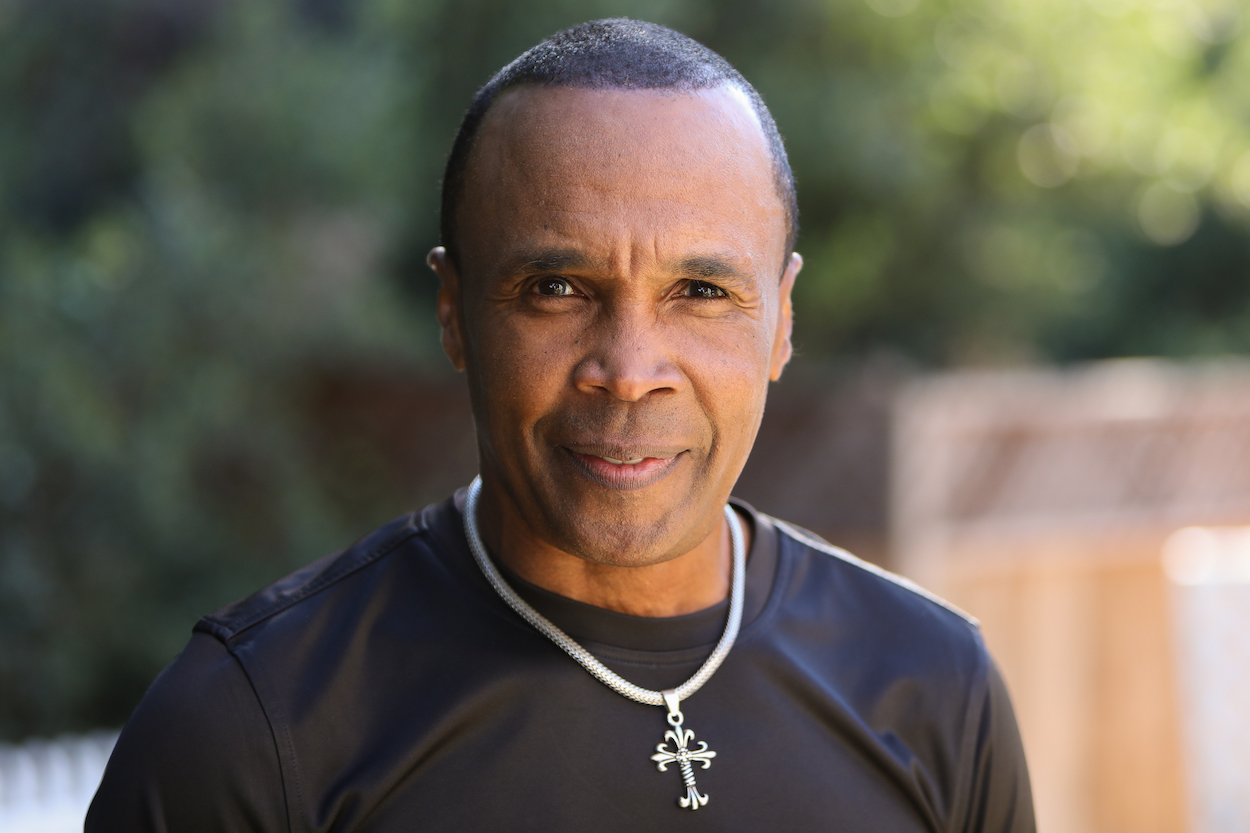Sports
Sugar Ray Leonard Explains How Boxing Led to His Alcohol and Cocaine Use

Sugar Ray Leonard was one of the best pound-for-pound boxers in the history of the sport. He and the rest of the Fabulous Four — Roberto Duran, Marvin Hagler, and Thomas Hearns — created excitement in weight classes below the heavyweight division, starting in the 1970s.
As great as he was in the ring, Leonard had issues outside the ring that were harder to fight. He recently joined podcast host Ryen Russillo to explain how his boxing career directly led to his cocaine and alcohol addiction in the 1980s.
Sugar Ray Leonard was a champion boxer
Ray Leonard was born in Wilmington, North Carolina, and his family moved north when he was three. “Sugar” grew up in the Washington. D.C/ Maryland area, per Biography.com.
At the age of 17, Leonard won the first of his three National Golden Gloves awards as he became one of the best boxers in the country. His amateur career culminated with a light-heavyweight gold medal for Team USA in the 1976 Montreal Olympics.
He went pro shortly thereafter, and, in 1979, Leonard won his first professional title, defeating Wilfred Benitez to win the WBC Welterweight Championship. A year later, Leonard fought in two of the most famous fights ever against rival Roberto Duran.
In the first match, billed as the “Brawl in Montreal,” Duran took the belt from Leonard after a hard-fought splits decision. Five months later, in New Orleans, a sharp and focused Leonard got the best of a worse-for-wear Duran. The latter boxer quit during the fight, uttering what may be the most famous two words in boxing history, “No mas.”
A year later, Leonard fought another legendary bout, this time defeating Thomas “Hitman” Hearns in The Ring Magazine’s 1981 “Fight of the Year.” Sugar Ray would hang up the gloves in 1984 but came back in 1987 to fight “Marvelous” Marvin Hagler. It was an iconic and controversial fight that Leonard won by split decision.
The boxer continued to fight, retire, and come back until 1997. During his last decade in the ring, Leonard would fight both Hearns and Duran again. At the age of 40, he lost to 34-year-old Hector “Macho” Camacho in ’97 and retired for good.
Leonard explained how boxing and his prior alcohol cocaine use are related
As good as he was outside the ring, the fabled Sugar Ray Leonard had a tough time matching the feelings he got inside the ring in his day-to-day life. The boxer joined The Ryen Russillo Podcast and explained how the highs of boxing led to him abusing alcohol and cocaine away from the sport.
Russilo dug into why Leonard came back 10 years after his famed Hagler fight. Sugar Ray explained that “something was missing” in his life away from the ring. He explained that in the run-up to the Camacho fight, he was abusing substances to cope:
What was happening by then was, to satisfy or cushion my mental blows and psychological blows, I would start drinking and came into cocaine — it was back in the ’80s, that’s when cocaine became something to get involved with.
Sugar Ray Leonard on the Ryen Russillo Podcast
He continued by telling Russilo that he abused the drugs and alcohol because of a “void in my life” away from boxing. His fame had become so great that he felt that he “wasn’t loved because I was just Ray” and that most of his interactions were “always superficial.”
Leonard summed it up by saying that the drugs and alcohol use was a response to being “sad” that he wasn’t doing what he truly wanted to do, which was box.
The boxer credits his wife and business managers with helping him through his addiction
Luckily for Sugar Ray Leonard, he had some good friends who helped him kick the cocaine relatively quickly, although the alcohol use took longer to give up. He said on the podcast:
I was going downhill, and no one really told me but my really trustful friends. And they said, ‘Ray, you gotta stop this, man. You’re not going to just hurt yourself. You’re going to hurt your family, hurt your friends, hurt your fans.’ And, you know, I just stopped. Just cold turkey, I just stopped doing cocaine. I just couldn’t stop the alcohol.
Sugar Ray Leonard on the Ryen Russillo Podcast
He also credits his “incredible [ex] wife, Juanita,” and his current wife, Bernadette, for helping him get past a dark time. He shared that he may have never been able to kick his addictions without them.
In addition to friends and his wives, Leonard admitted, “I had good business people too,” so he was able to get through that period and still be ok financially, unlike so many athletes and celebrities who lose it all when using drugs and alcohol.
He finished by saying that, for years, he kept these feelings about his sadness outside of the ring to himself. He eventually started talking out loud about these types of feelings in AA, though. This is why he is comfortable opening up about his past issues today.
“My life is so much better today,” Leonard concluded on an upbeat note. “Never perfect. Nothing’s perfect, but it’s so much better today.”
How to get help: In the U.S., contact the Substance Abuse and Mental Health Services Administration helpline at 1-800-662-4357.
RELATED: Did Sonny Liston Take a Dive in His Second Muhammad Ali Fight Because He Had Diarrhea?











